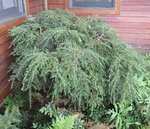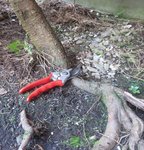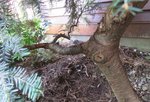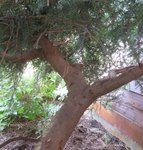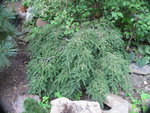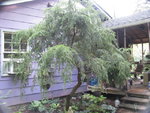Javaman4373
Shohin
We have a foundation hemlock, which I think is some variety of dwarf hemlock for foundation plantings. Every year it takes a beating from ice falling off the roof and I have considered digging it up and putting in a grow pot. It has gotten too large to conveniently cover with a protective structure for the winter. The trump diameter is about 3 inches and most of the foliage is an umbrella like crown. My idea is to pot the plant and place it there for the summer and move it for the winter. My understanding is that hemlock doesn't back bud, so that has discouraged me from trying to develop it as a bonsai. If that is true and it would not be suitable for developing as a bonsai, I still may want to prune it and pot it. When is the best time to cut it back and lift it? It would be nice to get it out of there before winter.

